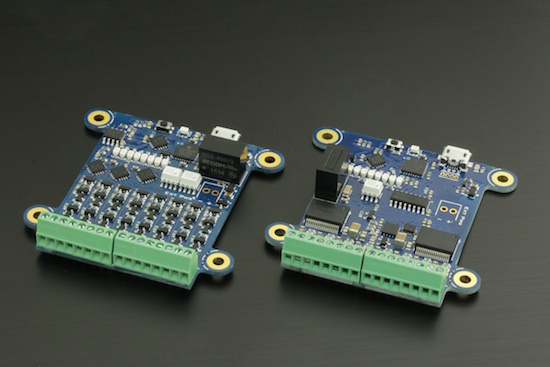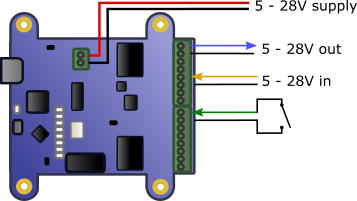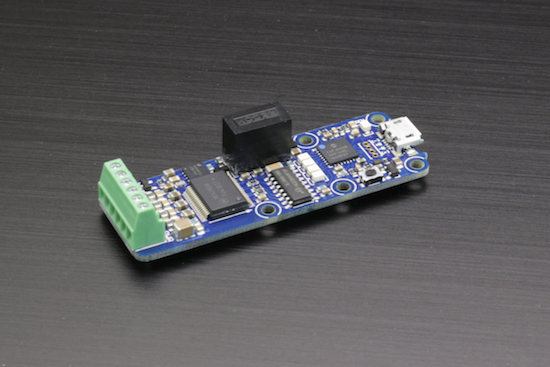![]() You may have noticed that we very recently replaced in our shop the Yocto-Maxi-IO with the Yocto-Maxi-IO-V2. The two versions of the module look like two peas in a pod. A more compact variant of the module is also now available: the Yocto-IO. Let's have a look at what changes with version 2 and at the capabilities of the miniature version.
You may have noticed that we very recently replaced in our shop the Yocto-Maxi-IO with the Yocto-Maxi-IO-V2. The two versions of the module look like two peas in a pod. A more compact variant of the module is also now available: the Yocto-IO. Let's have a look at what changes with version 2 and at the capabilities of the miniature version.
Why a Yocto-Maxi-IO-V2?
The aim of the Yocto-Maxi-IO is to communicate with binary electric signals, not only in 3V or 5V logical levels, but also with higher voltages, such as 12V. This allows us to interface industrial devices or control panels. The inputs/outputs are electrically isolated from the command USB bus, to avoid issues with ground current and phase differences. Each of the 8 channels can be configured as input or as output, which makes it a very flexible tool.
The first Yocto-Maxi-IO had two limitations: the maximum working voltage was limited to 12V, which didn't allow us to directly interface systems in 24V. The output maximum current was also limited to 50mA in total, which was fine to interface digital inputs but not to drive systems based on electromechanical relays. Moreover, the interface circuit wasn't protected against overvoltages, which caused some returns for repairs, in about 1% of the modules we sold.
We therefore conducted a survey with our customers to determine the desired ideal characteristics. The Yocto-Maxi-IO-V2 is the result of this evolution.
What changes and what doesn't change
The new version is physically and functionally identical to the old one, but with a better electric interface.

The Yocto-Maxi-IO and the Yocto-Maxi-IO-V2
The new input/output circuit of the Yocto-Maxi-IO-V2 is based on a robust chip, protected against short-circuits and voltage surges, and it can work with up to 28V. It is now able to drive up to 250mA per channel, with a much lower impedance than the first version. This therefore allows us to directly drive small electromechanical relays.
As its predecessor, the Yocto-Maxi-IO-V2 can work with 3V or 5V CMOS logic without external power supply, that is by taking the energy from the USB bus while preserving the electrical isolation. In this scenario, with the new version you can even use some current to power a small external digital circuit if necessary, by connecting it directly to the external voltage terminal.

The Yocto-Maxi-IO-V2 can even power a small external circuit in 3.3V or 5V. Make sure to not consume more than 100mA in all, including outputs!
To use arbitrary voltages, for example 12V or 24 V, you must as before provide the used voltage on the ad hoc terminal. Note that it is necessary also if you use the device as input only.

The Yocto-Maxi-IO-V2 can work with up to 28V, but you must provide the reference voltage on the external voltage terminal
The Yocto-IO
Because the new output circuit is more compact, we were able to create a miniature version of the Yocto-Maxi-IO-V2, simply called Yocto-IO. With four inputs/outputs instead of eight, it works in exactly the same way:

The new Yocto-IO
There was room on the terminal for only one mass wire, shared by the 4 inputs/outputs, but we could however put the external voltage there as weéé, which eases connections.

Typical connection diagram of the Yocto-IO
Example
To conclude, here is a short application made with the Yocto-Maxi-IO-V2.


